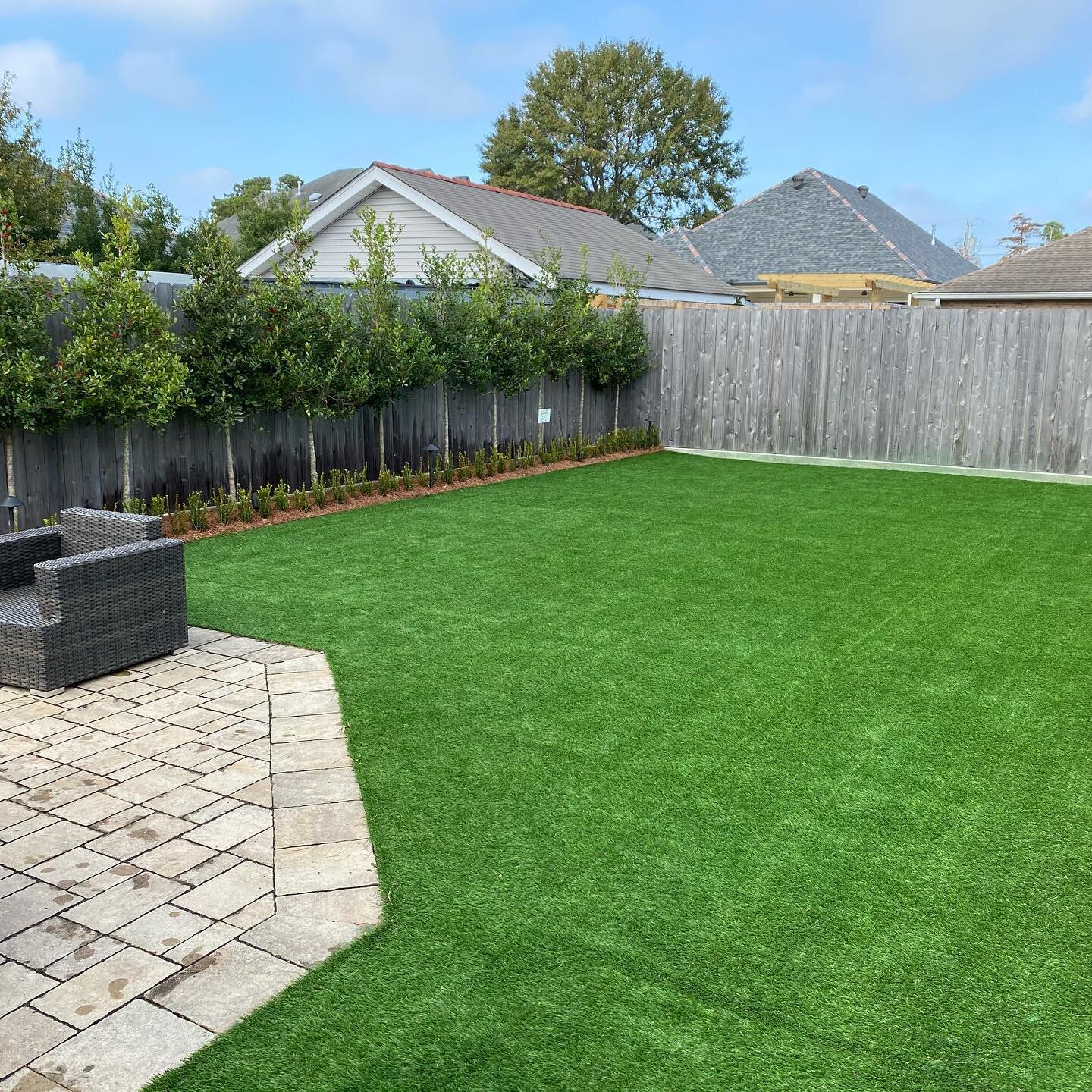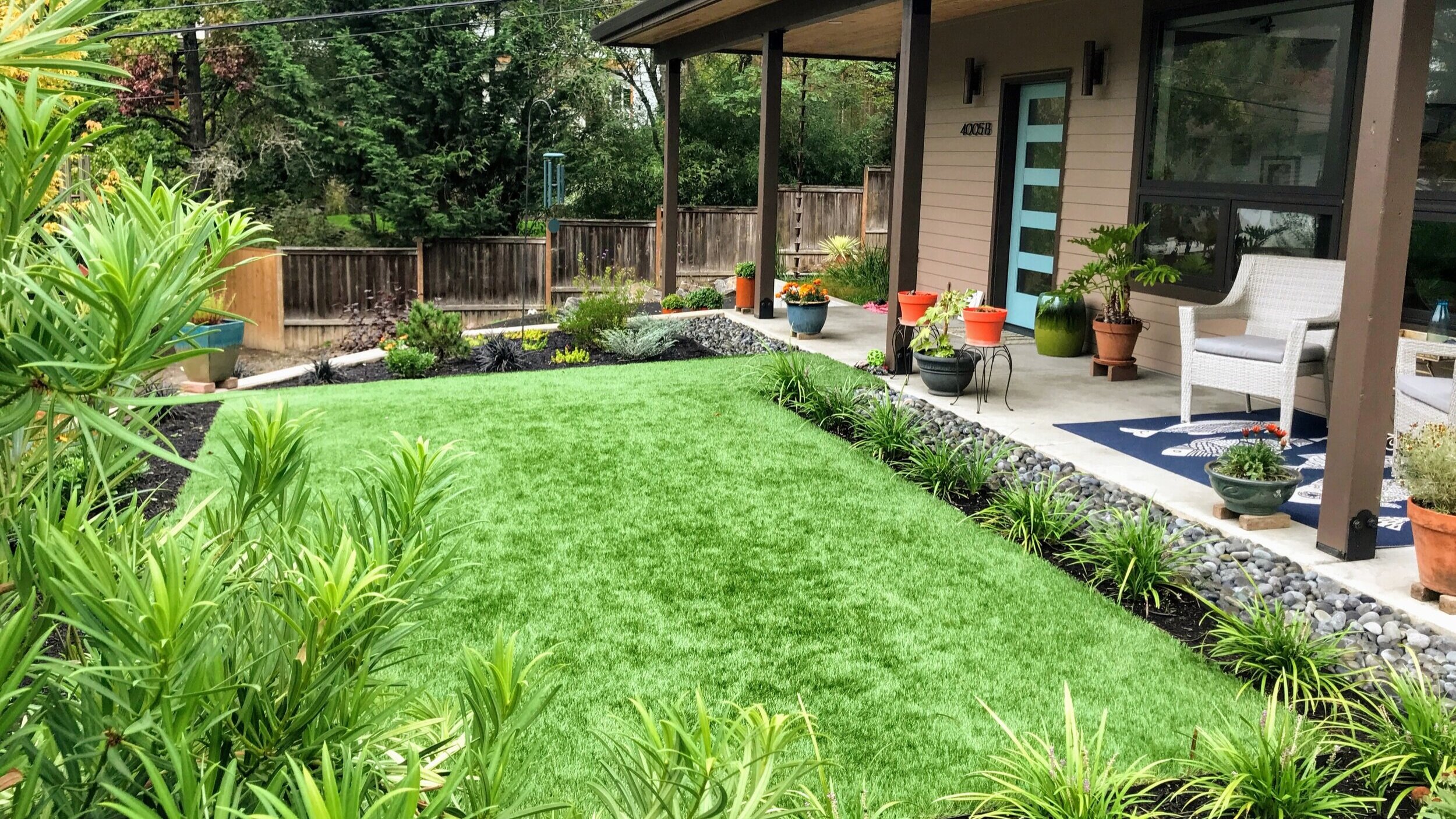Trusted Phoenix Turf Companies Delivering Superior Synthetic Grass Installation
Wiki Article
Delve Into the Environmental Perks of Opting for Synthetic Grass Solutions
The adoption of fabricated grass remedies presents a compelling possibility to address pushing environmental difficulties. By significantly minimizing water usage and minimizing the application of hazardous chemicals, these options not only promote lasting landscape design however likewise shield neighborhood ecosystems. The lower carbon footprint associated with decreased upkeep tasks adds to a more lasting method to land management. The implications of these benefits prolong beyond plain conservation initiatives, increasing inquiries concerning their lasting effect on habitat conservation and general environmental balance. Discovering these measurements discloses an intricate interaction worth thinking about.Water Preservation Benefits
One of the most substantial benefits of synthetic turf is its capacity to save water. In comparison, synthetic lawn does not require watering, significantly decreasing the overall need for water sources.By getting rid of the demand for routine watering, synthetic grass adds to sustainable landscape methods and aids reduce the environmental impact of excessive water consumption. In addition, the conservation of water includes the reduction of overflow, which can bring about dirt disintegration and river contamination.
Furthermore, the setup of man-made grass enables house owners and communities to allocate water resources much more effectively, concentrating on essential uses such as drinking water and agriculture. The shift towards man-made turf not just advertises responsible water use however additionally lines up with broader environmental goals focused on maintaining natural sources.
As communities significantly focus on sustainability, the water conservation benefits of artificial lawn provide a compelling case for its fostering in commercial and household landscaping jobs.
Reduced Chemical Usage
The transition to synthetic grass considerably lowers the reliance on chemical therapies typically used in all-natural turf upkeep. Traditional grass administration generally includes the application of plant foods, chemicals, and herbicides to promote growth and control insects. These chemicals can pose dangers to human health and wellness, local wild animals, and the environment, adding to dirt and water contamination.In contrast, man-made lawn gets rid of the requirement for these hazardous substances. By lessening the release of synthetic compounds right into the community, fabricated lawn advertises healthier soil and water systems.
Furthermore, the lack of chemical drainage related to synthetic grass setups helps protect neighborhood waterways from contamination, supporting water life and keeping biodiversity. Arizona artificial turf. As areas significantly prioritize sustainable methods, deciding for artificial grass presents a sensible remedy that aligns with environmental preservation goals. With this change, property proprietors can enjoy rich green rooms without endangering environmental health, paving the method for a much more lasting future
Reduced Carbon Impact

Furthermore, the installation of man-made lawn can cause substantial important link water conservation. Natural yards need substantial quantities of water for irrigation, which not only adds to the carbon footprint connected with water extraction and treatment however likewise stress neighborhood water sources. In comparison, synthetic grass needs minimal upkeep, calling for no watering, thereby substantially minimizing water use and its associated energy prices.
Furthermore, the durability of synthetic grass adds to its decreased carbon effect. With a life-span of up to 15 years or more, the demand for regular substitutes is decreased, leading to much less waste and lower energy consumption in production and disposing of conventional lawn choices. On the whole, synthetic grass offers a lasting choice for ecologically aware landscape design.
Habitat Preservation
Habitat conservation is a vital consideration in the debate over landscape design choices, specifically when comparing synthetic grass to natural grass. All-natural grass yards typically require comprehensive upkeep, including using fertilizers, herbicides, and chemicals, which can negatively impact regional ecosystems. These chemicals can leach into the dirt and waterways, damaging native vegetation and animals and disrupting neighborhood environments.
Man-made turf eliminates the need for dangerous chemicals, therefore protecting neighboring wild animals and preserving the stability of surrounding environments. The installment of fabricated grass can lead to the conversion of former yard locations right into more biodiverse landscapes, such as pollinator yards or indigenous plant locations, which can support neighborhood wildlife.
Ultimately, the shift to synthetic grass not only preserves water and decreases upkeep efforts but likewise fosters an extra unified connection between human activities and the natural atmosphere, advertising habitat preservation while doing so.
Long-Term Sustainability
Long-term sustainability is an important consider assessing the benefits of synthetic grass over standard yard yards. One of the most considerable benefits of synthetic grass is its resilience; it can last up to 15-20 years with marginal upkeep, whereas all-natural grass calls for frequent reseeding and replacement. This longevity decreases the demand for constant resources, such as water, fertilizers, and chemicals, which are necessary for preserving a healthy and balanced grass lawn.Additionally, artificial grass adds to a decrease in carbon emissions connected with grass care tools. Traditional yards typically need gas-powered mowers, leaners, and blowers, every one of which add to air contamination. Turf installation phoenix az. On the other hand, synthetic turf removes the demand for visit this site such equipment, promoting a cleaner atmosphere
In addition, the production of synthetic grass increasingly makes use of recycled materials, improving its sustainability profile. As suppliers take on green techniques, the ecological impact of man-made grass remains to decrease.

Conclusion
The adoption of artificial turf solutions provides considerable ecological benefits, consisting of substantial water conservation, lowered reliance on harmful chemicals, and a lower carbon footprint. Man-made grass aids in maintaining natural environments by minimizing land disturbance and promoting lasting sustainability with the usage of durable products. Collectively, these variables emphasize the capacity of synthetic grass to contribute favorably to ecological wellness and provide a viable alternative to standard landscape design practices in a significantly resource-conscious world.In contrast, man-made lawn does not require watering, substantially lowering the overall demand for water sources. By decreasing the release of synthetic compounds into the environment, fabricated turf promotes healthier soil and water systems.
In addition, the installation of synthetic lawn can result in substantial water conservation. In contrast, synthetic turf needs marginal maintenance, requiring no watering, therefore substantially decreasing water usage and its connected power expenses.

Report this wiki page